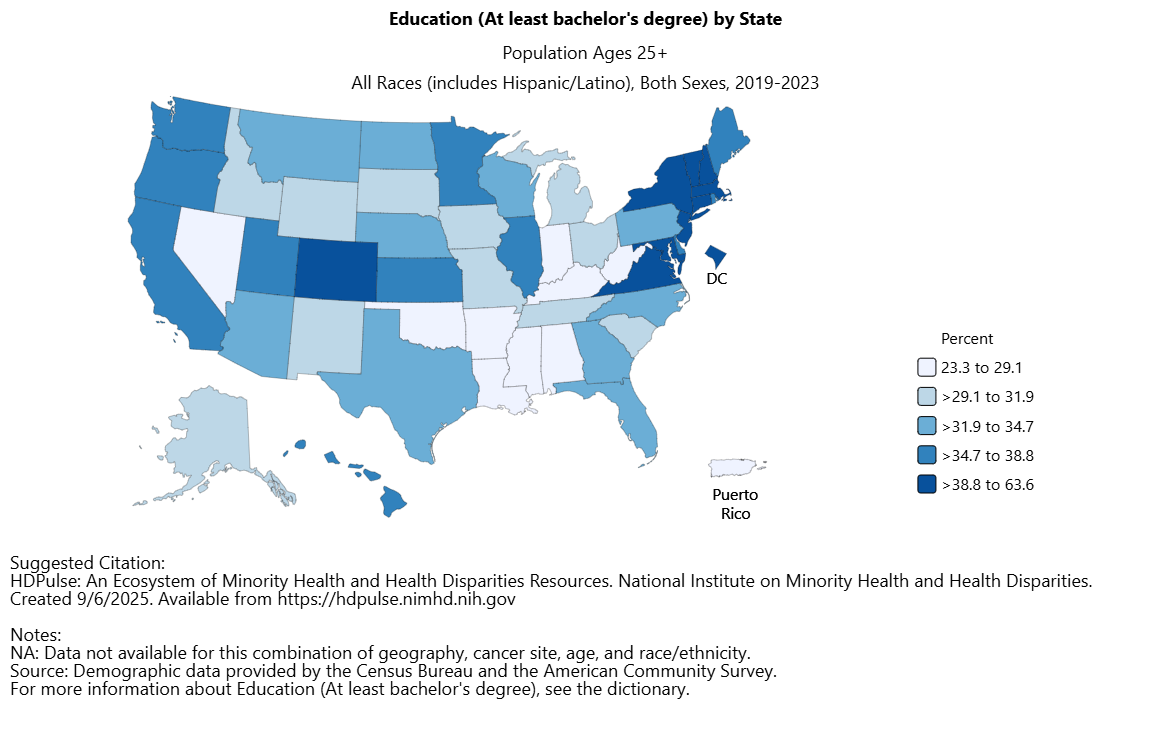The Map That Doesn’t Match: Vaccine Exemptions and America’s Public Health Divide
Why vaccine exemptions don’t fit America’s usual divides
Everyone knows the map.
For almost every social or economic issue — poverty, anti-LGBTQ+ laws, educational access — America’s geography tells a familiar story.
The map of college education shown below mirrors patterns we’ve seen again and again: the Deep South and Mountain West trailing near the bottom, East and West coasts perched near the top.
That fami…
Keep reading with a 7-day free trial
Subscribe to Mesoscale News with Rebekah Jones to keep reading this post and get 7 days of free access to the full post archives.


